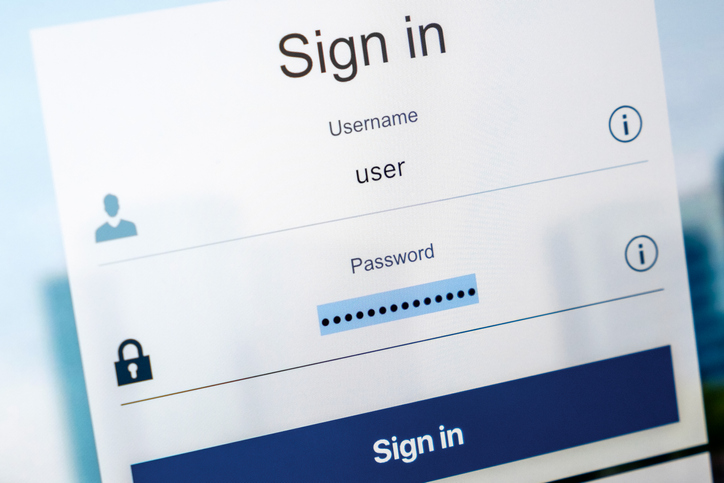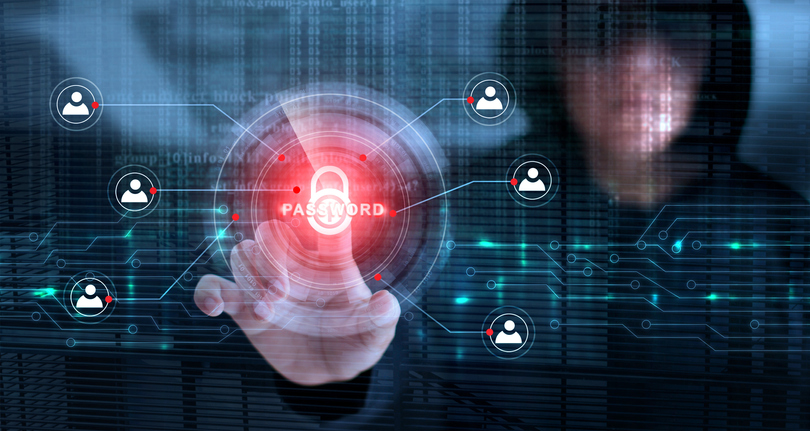
by Felicien | Apr 26, 2019 | Education
Microsoft began notifying Outlook.com users of a 2019 security breach that occurred between January 1st and March 28th. Hackers were unintentionally given unauthorized access to some accounts, where they were then able to view subject lines, email addresses, and folder names. While no login details—including passwords—were directly accessed as part of this breach, Microsoft did warn users to reset their passwords.
Although the hackers could not view the actual content in the bodies of emails nor download attachments, this incident still represents a major—and disturbing—security incident. This breach serves as a reminder to every business to tighten up its security measures and protect its assets.
Use multi-factor authentication.
Do not leave this as an optional measure for your employees; require it. Multi-factor authentication uses more than one form of identity confirmation—this is the “multi-factor”—to prove the identity of the person attempting to access a particular platform—this is the “authentication.”
Depending on where in the product the Microsoft breach happened, multi-factor authentication could even have possibly prevented or limited the breach. In general, this authentication process adds a strong layer of security. Hackers don’t usually have both the password and the PIN, secret questions, or other ability to verify their identity.
When vetting which type of authentication to implement—if you have this option—consider using the one that is easiest for employees to have on hand, but hardest for others to get a hold of. Trying to make this relatively convenient for your employees will make it easier for them to comply, which will keep your business more secure. Multi-factor authentication is a measure that should go hand-in-hand with training your employees to use strong passwords.
Account for all devices—including mobile—in your security processes.
Very few companies still limit employee access to business assets strictly to desktops at work. There is a growing trend of employees being able to work remotely, even if it is not full-time. A recent study showed that as many as 70% of employees work remotely at least once a week. Whether working from home, a rented office space, or on-the-road, they are using their devices to log in from a distance, well beyond the secured confines of your office. This figure was accounting for full-time employees; contractors only increase the number of remote workers further.
The security processes implemented at your company need to account for all of how workers are accessing company resources. Email access on mobile devices is one of the most common ways in which employees take their work on-the-go, and so it’s a strong starting point for building out these protocols. Because confidential company information is being accessed on these devices via networks over which companies have no control, it is critical that both the email servers as well as the devices being used have robust security systems in place.
While new improvements continue to roll out to tackle these issues, solutions that work across all devices are the norm. Security software, as well as encryption tools, can help protect data regardless of the device, particularly when combined with encouraging employees to log-in via secure VPN networks. Cloud options for data storage are offered by providers with a menu of security options; it’s worth walking through your needs and investing in top-quality solutions.
Document your security processes.
With all of the work that goes into developing security processes, even more needs to be carried out to maintain their implementation and ensure that they remain up-to-date with new tech trends and emerging risks.
This is a vast and complex undertaking. All existing assets must be brought onto any updated infrastructure. Employees must be set-up for and onboarded to the security procedures, and checkpoints must be established so that their compliance may be monitored. Systems must be monitored for any breaches, as well as smoothly updated across all users and data to accommodate any new vulnerabilities that arose since the previous update. Different components, whether hardware (including different devices, such as mobile) or software, may experience issues with any updates. New members of the internal information technology must be introduced to the systems while existing members must stay abreast of any new developments; even team members working simultaneously on the same project must address potential communications issues.
Thorough documentation of processes helps achieve this by providing an objective record of the systems in place. This can be used for onboarding; for internal audits; for evaluating alternatives or potential improvements; and even for reviewing the source of vulnerabilities and providing accountability should an issue arise. This sort of record-keeping is an essential component of transparency in company policy and helps enforce quality control on internal processes. Of course, it must also be protected with the highest measure of security since it arguably contains “the keys to the castle.” Decentralizing its storage and scattering protected, encrypted components of it across multiple storage solutions can help protect company assets from the sort of large-scale breach that could otherwise bring your data assets to their knees.
And so, the large-scale Microsoft breach serves as a reminder that active vigilance must always be maintained over internet security, without relying entirely on one single individual, provider, or service. No single entity can be trusted to be entirely safe when major players like Microsoft are clearly vulnerable, despite the teams of brilliant engineers hired to implement safeguards and the millions of dollars invested in diverse preventive measures. Every business needs to be proactive in protecting itself through rigorous internal standards, ranging from staff training through the implementation of mandatory security precautions, to minimize the risk of vulnerabilities being exposed and exploited. Factoring in every employees’ data paths and employing multiple layers of overlapping security efforts at every step of the way—and documenting these processes for easy internal accountability and refinement—are critical for business informational security in this highly connected digital age.

by Felicien | Apr 26, 2019 | Education
As the digital community continues to expand to include more individuals and more devices, enforcing cybersecurity becomes more complicated. The number of opportunities and vulnerabilities for hackers to leverage is continuously growing; it is imperative for businesses to take proactive measures to protect themselves. With new terms and acronyms constantly emerging to refer to these issues, it’s helpful to make sure you and your team are on the same page with the vocabulary you use.
We’ve compiled a list of some of the most common words and phrases surrounding cybersecurity issues.
Access control – This is the sequence of steps by which requests to retrieve information are approved or denied. The phrase actually originates from the terminology used to refer to gaining entry to physical facilities.
Active content – This is the dynamic media — including JavaScript, polls, and animations — that runs on a site. In users with low-security settings enabled, this media automatically runs, opening the door for scripts and software to carry out other functions behind-the-scenes and unbeknownst to the user.
Adware – You see this pop up when you get unwanted advertisements appearing on your screen when you visit certain sites. Adware is highly problematic because it can not only disguise itself as a legitimate site and trick you into clicking buttons that actually trigger the download of software that can track you to collect data on your activities, but it can also add harmful software to your device.
Authentication – This refers to the sequence of steps by which the identity of a user or device is verified. Single passwords are the simplest form of authentication. Current best practices are for multi-factor authentication, where multiple different checks are used to verify identity since hackers are less likely to be able to provide various forms of verification.
Blacklist – Any collection of users, devices, or other entities that are not permitted access privileges.
Bot – An individual device that has been fed programming to act maliciously under the remote control of another administrator.
Bug – A functional glitch or imperfection present in a device or piece of code.
Certificate – This is virtual confirmation of the identity of a specific entity. This is usually issued by a Certificate Authority (CA) and is something that can be verified. When you visit a secure site, for example, your computer checks the site’s security certificates and in this way determines that the site is secure.
Data breach – Any event where information is shared with an untrustworthy party or opened up to an unsecured environment.
Data mining – The analysis of large data sets to identify previously unknown patterns or relationships. Often used towards positive ends, such as in medicine to discover health trends in populations or in academia to characterize social patterns, data mining can also be employed for malicious purposes by hackers.
Distributed Denial of Service (DDOS) – This is a form of attack that targets a specific server or network of servers, causing a massive, sudden surge in traffic with the intent of shutting down the servers. One of the most common ways for this to take place is for a hacker to use malware to gain access to several machines connected on the same network; these can then be controlled by the hacker or directs them to flood the network servers.
Encryption – This is a process of data conversion that transforms it using a secret code into a sequence that requires deciphering to be able to use; only authorized entities have the means to decode this sequence and access the data contained within.
Firewall – This can be constructed using software and/or hardware, but at its core, it sets a specific set of access permissions in place that control who can access a particular network. Secure firewalls offer several layers of protection from hackers and their malware.
Honeypot – This is a fake vulnerability that masquerades as a weakened part of your system or network, in an effort to bait a potential hijacker or other threat. It can be used as part of a security plan as a way to monitor whether the system or network is currently a moving target for any threats.
Keylogging – This is generally a malicious practice where keyboard input is secretly monitored as a way to keep tabs on a user’s activity. Aside from the violation of personal privacy inherent to this, this is particularly dangerous as it gives hackers access to input personal details such as credit card information and passwords.
Malware – This is a broad term that refers to any software that intrudes upon a computer system’s process in an unauthorized manner.
Phishing – This refers to the practice of using false communications to deceive people in a way that elicits their sharing of personal information and sensitive details. One typical example of phishing is when scammers send emails pretending to be the Internal Revenue Service or a bank, and scaring recipients into believing they are in trouble and need to resolve a conflict. This resolution always requires the user to share details so that they may be identified.
Ransomware – This is a form of malware that cannot be removed until payment of a ransom is received by the malicious instigator. The most common avenues for spreading ransomware include infected websites as well as phishing.
Spoofing – This refers to any method by which a user is conned. Successful spoofing is what leads users into sharing their details with the malicious party. For example, the impersonation involved with many phishing scams is an example of spoofing.
Spyware – This is malware that is secretly placed onto a system and monitors the user’s activities.
Threat – This is an imminent risk to exploit known or unknown opportunities for malicious individuals or organizations to infiltrate a system or network.
Virus – A piece of programming code that can secretly enter a computer, replicate, and then be transmitted to other computers.
Vulnerability – This is any potential opportunity for malicious individuals or organizations to infiltrate a system or network. Threats exploit vulnerabilities; and so, it might be a flaw in design or a gap in security protocols.
Whitelist – The opposite of a blacklist, this is a list of exclusions to a particular security rule, generated because the members of the list are known to be trustworthy.
Strong internet security teams are continually assessing the risks of their systems to prevent emerging vulnerabilities and consistently triage the highest risks associated with their systems and networks. The field of cybersecurity is continuously evolving as hackers riff off of existing malware and continually discover new vulnerabilities to exploit.
As technology continues to evolve and become capable of achieving new things, each advance also opens the door for new malicious acts and further sophistication in security breaches. It is the job of cybersecurity teams to always remain one step ahead and build their information systems in a way that prevents hackers from successfully infiltrating in any way.

by Felicien | Apr 26, 2019 | Education
The Tallahassee Democrat reported on April 5th that a large sum of money had been stolen from the city of Tallahassee’s employee payroll. The perpetrator is suspected to be a foreign hacker.
What was stolen in the hack?
The breech diverted approximately $498,000 from the city payroll account. Still, all city employees have received their earned paychecks. This hack was the second time in less than a month that a breach of city security had occurred.
How did the attack occur?
The city of Tallahassee employs an out-of-state third-party vendor to host their payroll services. Their employees should be paid regularly through direct deposit. However, a foreign hacker apparently targeted this third-party vendor, effectively redirecting the direct deposits to their own accounts.
The city of Tallahassee found out about the breach when their bank alerted them. Of course, employees found out simultaneously when they awoke to realize they had not been paid on payday.
Is there any way to get the money back?
In the majority of large scale hacks, stolen funds or data is difficult or impossible to retrieve. Still, with help from their bank, the city of Tallahassee has managed to recoup approximately a quarter of the stolen money.
They continue to pursue criminal charges against the hackers with the aid of law enforcement and their insurance provider as well.
How do cyber attacks like these occur?
Successful cyberattacks usually start with some form of an email hack. This is usually achieved through phishing.
In fact, before the most recent hack of the city of Tallahassee, an email had been sent out that appeared to be from the City Manager. It was actually from an outside hacker who had included a virus disguised as a Dropbox link in the email.
While it is not suspected that this email was related to the stolen payroll funds hack, this does happen. “Phishing” emails can help hackers procure useful information about accessing in-network files and accounts.
How can you prevent hackers from attacking your business?
Large municipalities such as Tallahassee City are increasingly being targeted in cyber attack thefts. But the truth is, any business — or individual, for that matter — can fall prey to a cyber attack.
Unfortunately, the retrieval rate on hacking thefts is not high, meaning that prevention is key. The best way to prevent a hack is to prevent phishing, as this is how most hackers access your systems and accounts.
Make sure that everyone on your staff is keenly aware of what to look for in terms of phishing emails. When in doubt, suspicious emails should be left unopened. Or, at the very least, links should not be clicked, and personal or account information should never be handed over unless it’s sure the request is legitimate.
It’s also important for businesses to employ the services of a reputable and experienced IT services provider. Look for one who specializes in cybersecurity and has experience dealing with hacking prevention.

by Felicien | Apr 24, 2019 | Education
If the thought of letting go of crucial parts of your business gives you the hives, it’s time to get real about outsourcing. It’s practically impossible for one individual or even a small group of people to adequately perform every function of a business. Even if you were able to hire specialists for each stage of your work — technology, accounting, payroll, human resources — would you really have enough work to keep a full-time asset occupied? Chances are, you need support in a way that would make a full-time hire the wrong decision for your business. You would either be hiring an extremely ineffective (yet low cost!) staff member who will be a drain on resources, or you struggle to perform multiple roles yourself. This leaves you with no time to focus and a poor experience for your customers. Fortunately, there’s a better way: outsourcing.
The New Outsourced Office
Outsourcing parts of your business doesn’t carry any sort of stigma and it doesn’t mean that you’ve failed as a business owner. What it means is that you’re being strategic with your time and determining where you are personally adding the most value to the business. Perhaps you need to know that your accounting and payroll are perking along in the background, but don’t have the expertise yourself to stay on top of the latest changes in legislation, compliance and tax law. This is an ideal situation for outsourcing to a trusted partner whose job it is to maintain compliance for your business. You’re effectively offloading that risk and stress from yourself or your staff to another organization, so you can focus on your core competencies as a business.
Focus Where It Counts
There’s something that makes every business unique, and that special sauce is the one thing that you don’t want to outsource. Everything else should be fair game for consideration, especially your technology and telecommunications infrastructure. The highly complex tasks associated with these operations can be expensive to hire outright, and difficult to find the right person for your needs. As your operations change over time, you may discover that you take your business in a different direction. This often means shifting staff members or expensive retraining for current staff. When you work with a managed IT services provider, you’re able to be much more nimble with technology changes and can expand your operations in a much more fluid manner.
Understanding when to outsource and when to maintain specific operations within your business can take time. Starting with a highly complex operation such as technology may give you the confidence that you need to outsource additional work so you’re able to focus on the core needs of your business — and to leverage your expertise towards exponential growth.

by Felicien | Apr 24, 2019 | Education
Artificial intelligence and robotics are poised to change the entire economic landscape over the coming decades, with an estimated 30% of existing jobs poised to be taken over by robots by 2030. Nowhere is this more evident than in healthcare. Many healthcare tasks are routine and prone to human error, making them prime targets for automation. At the same time, patients and ethics experts remain skeptical as to how robots may replace the expertise and compassionate presence of human medical providers.
Current Role of Robots in Health Care
Many people assume that robots in medicine remain years away, but the technologies currently deployed in medicine may come as a surprise. The first robotic device for surgical procedures, the da Vinci Surgical System, was initially approved by the Food and Drug Administration in 2000. It has performed more than 20,000 since, offering safe and reliable surgical interventions overseen by a human surgeon.
Surgery is not the only area of medicine where robots have made an impact. Powerful UV light-emitting robots disinfect surfaces and entire rooms, reducing risk of hospital-based infections such as MRSA or C. diff. Prosthetic robotic limbs interface with the nervous system to restore movement and the sense of touch to amputees. Automated dispensing robots limit medication dispensing errors in pharmacy settings. And clinical training robots offer lifelike simulations of medical conditions to help doctors during their training.
Future Applications of Artificial Intelligence and Automation
With each year, the role of automated systems in health care continues to expand. Industry experts predict a major shift in how health care is delivered over the next few decades. For example, robots are perfectly poised to increase access to medical services in rural or underserved areas. In a telehealth model, robots may collect routine clinical information such as a patient’s blood pressure, heart rate, breathing, and presenting symptoms. A remote specialist can then use the clinical information to make a diagnosis and offer a treatment plan.
Robots may also be deployed in rehabilitation settings to assist with physical therapy for patients with spinal cord injuries or neurologic diseases. Integrating robotics with virtual reality can help patients improve mobility, balance, strength, and coordination.
Human-sized robotics systems are not the only ways that robots may revolutionize medicine. Microbots or nanobots are tiny mechanical devices being developed to deliver drugs to specific sites. Currently, chemotherapy and other medical interventions cannot be specifically targeted to one area of the body. Researchers are developing microbots and nanobots made from biodegradable materials that can deliver medications without being attacked by the human immune system.
Limits of Robotics in Health Care
Despite the advantages of artificial intelligence and automation, there are significant drawbacks when considering how to provide high-quality clinical care. Take, for example, the experience of Catherine Quintana, whose 78-year-old father was taken to Kaiser Permanente Medical Center in Fremont, CA, due to chronic lung disease. Quintana was shocked when a robot rolled into the room to deliver some medical news — that her father was dying and that the only remaining treatment was palliative care.
Though extreme, this example points to one of the fundamental limitations of automation in health care. Even with cutting edge automation technology, robots are incapable of passing as humans. In particular, they cannot convey human emotions and struggle to handle complex questions. This limits the role of robots in health care. Though they may be used for some types of automation, when it comes to discussing complicated chemotherapy regimens with an oncologist or delivering the news that a loved one has Alzheimer’s disease, we continue to crave human touch.
Despite these limitations, robots have a clearly defined role in our medical landscape. Routine tasks with a high potential for human errors are perfectly poised to be taken over by automation. The ultimate question is how we, as patients, will react and adapt to this new era of robotic medicine.




